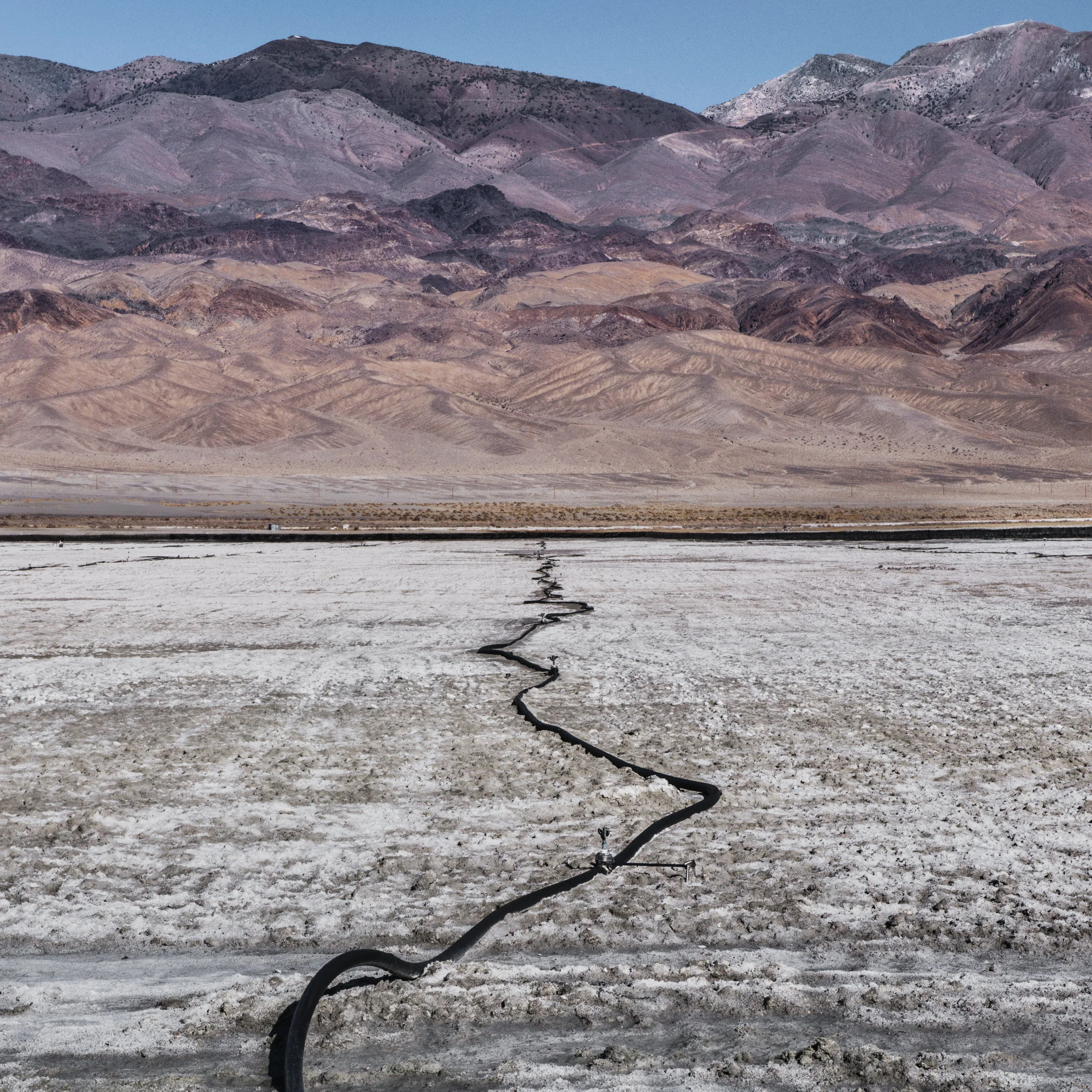







Dust Mitigation Program, Owens Valley. 2017.
The now-dry Owens Lake in the Eastern Sierra was drained when the LA aqueduct was built in 1913 to divert almost all of the valley's water hundreds of miles to the city of Los Angeles. The Los Angeles Department of Water & Power accomplished this by purchasing extensive land and water rights in the valley, in spite of the protests by farmers and landowners. The dry lakebed created a problem - toxic dust. After litigation in the 1970's, LADWP was forced to mitigate the dust problem, and the permanent sprinkler system was eventually born. The effort is formally known as the Dust Mitigation Program.

Owen's River Valley - once a lake that boats carried ore on from shore to shore, now grasslands and marsh after being drained to supply Los Angeles with water.

Watering the Desert. Owens Lake, CA. 2017
After purchasing land with water rights and then draining the Owens River Valley of most of its water to feed the LA aqueduct, the LADWP created what was said to be the single worst source of particulate matter pollution in the United States. The toxic dust led to court-mandated irrigation, which has been installed in 45 square miles of the dry lake bed. Timed sprinkler systems water the ground as part of the Dust Mitigation Program.

Sunrise over Owens Lake.
The nearly-dry lake once carried barges loaded with supplies and silver bullion to ports on opposite shores, before the Owens River was diverted into the LA aqueduct.

Cattle graze on salt grass in the Owens River Valley.
As part of the process of acquiring water rights in Inyo County to feed the LA Acqueduct, the City of Los Angeles bought approximately 250,000 acres of farms and ranches in the Owens River Valley. 50 leases were then extended for cattle grazing to ranchers and farmers. The leases on City of Los Angeles–owned lands are administered by the Los Angeles Department of Water and Power.